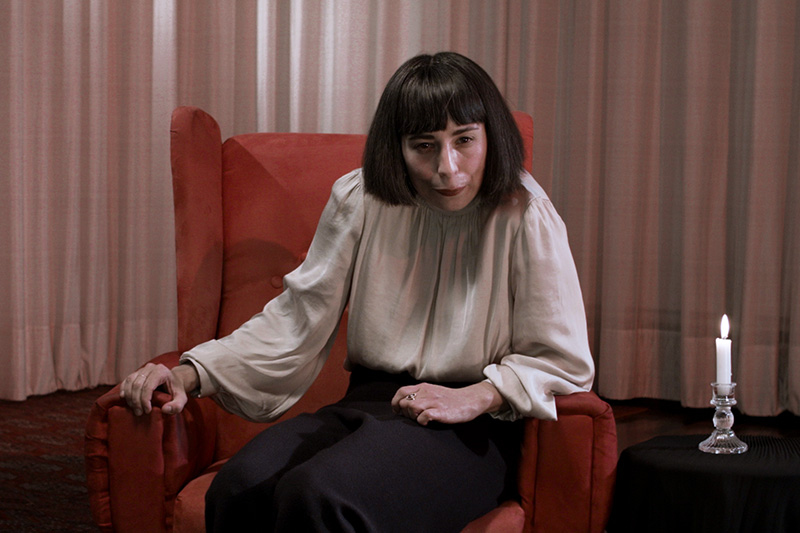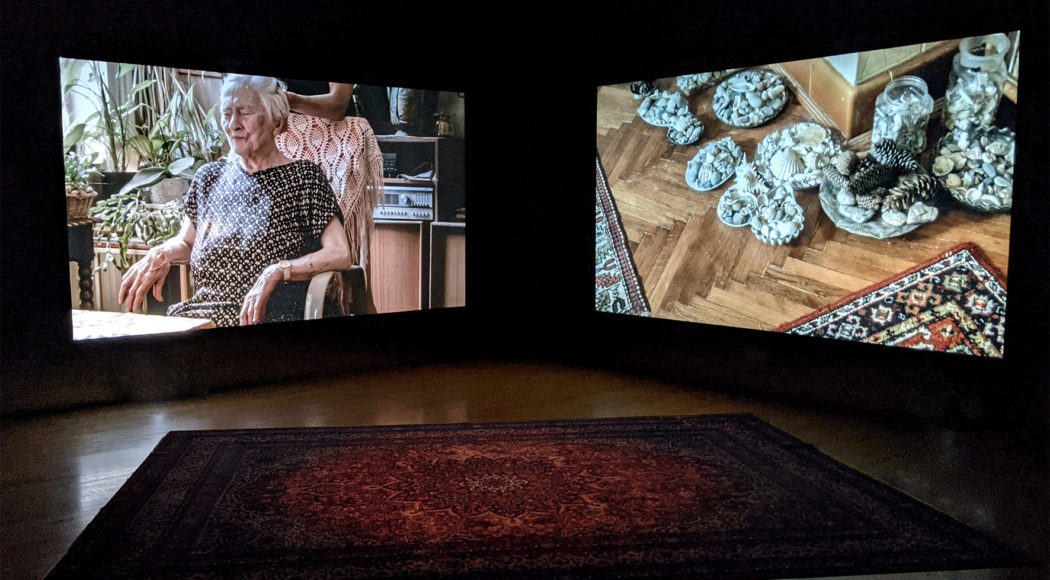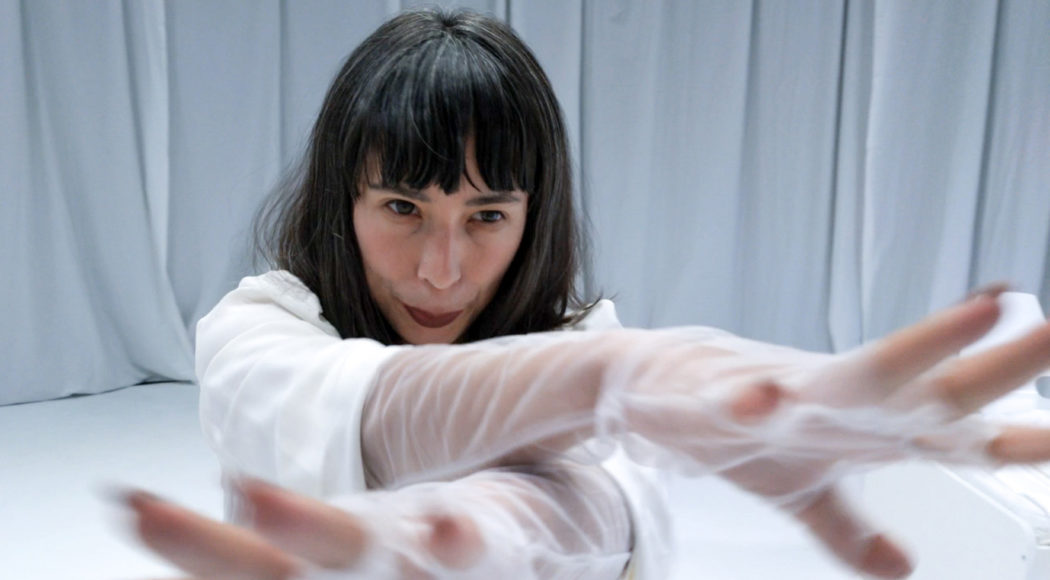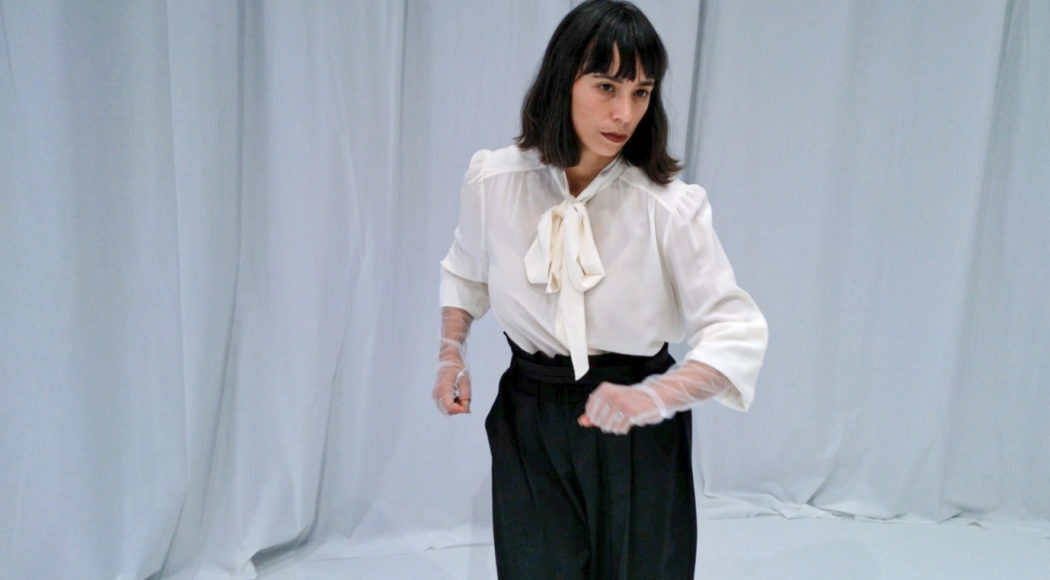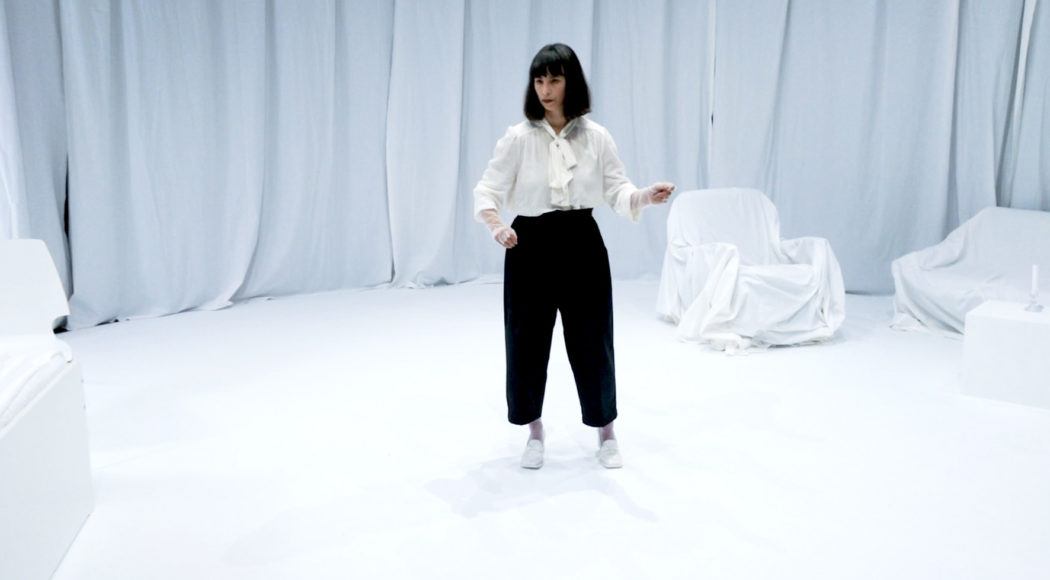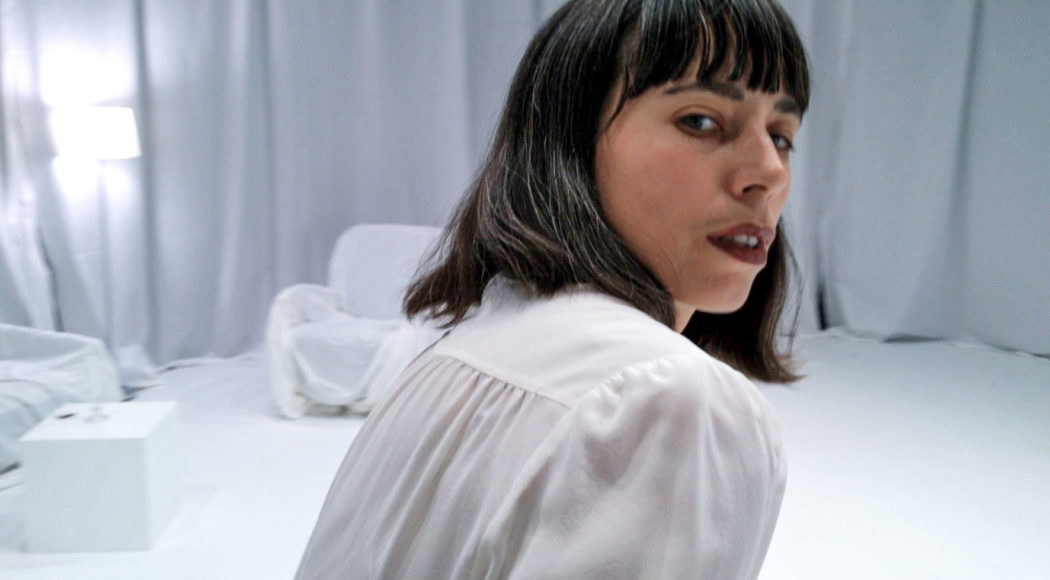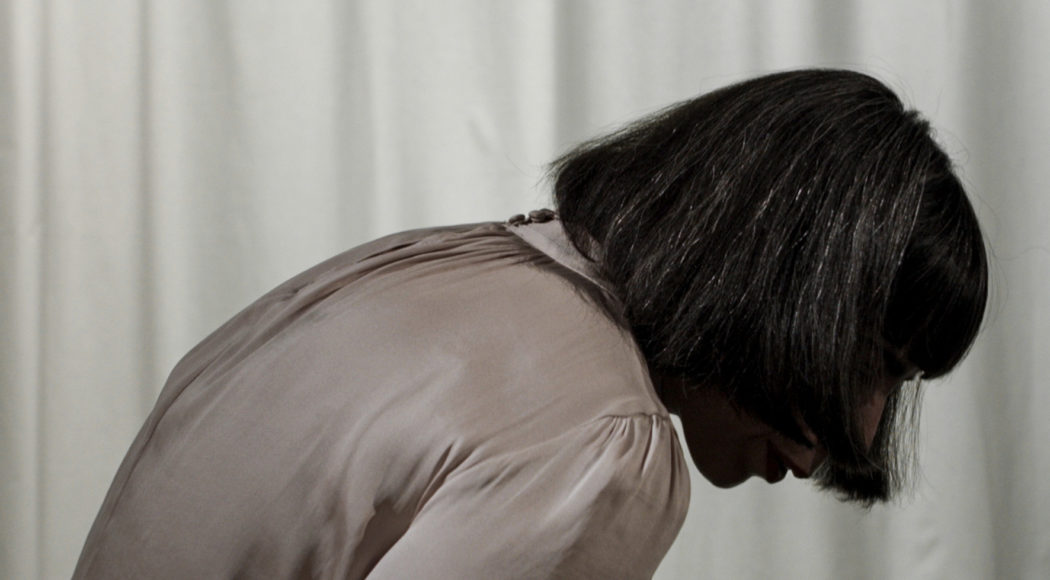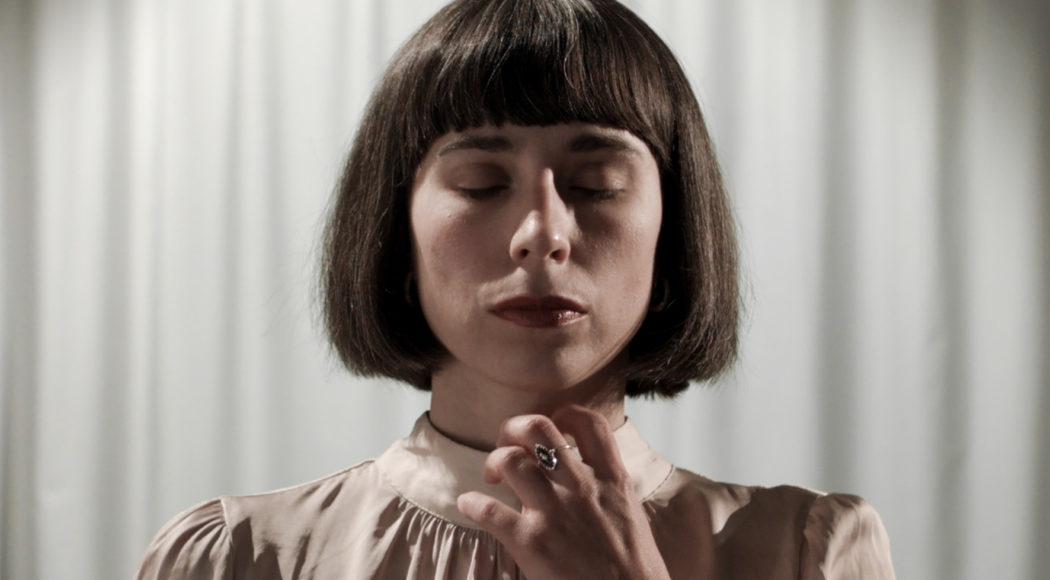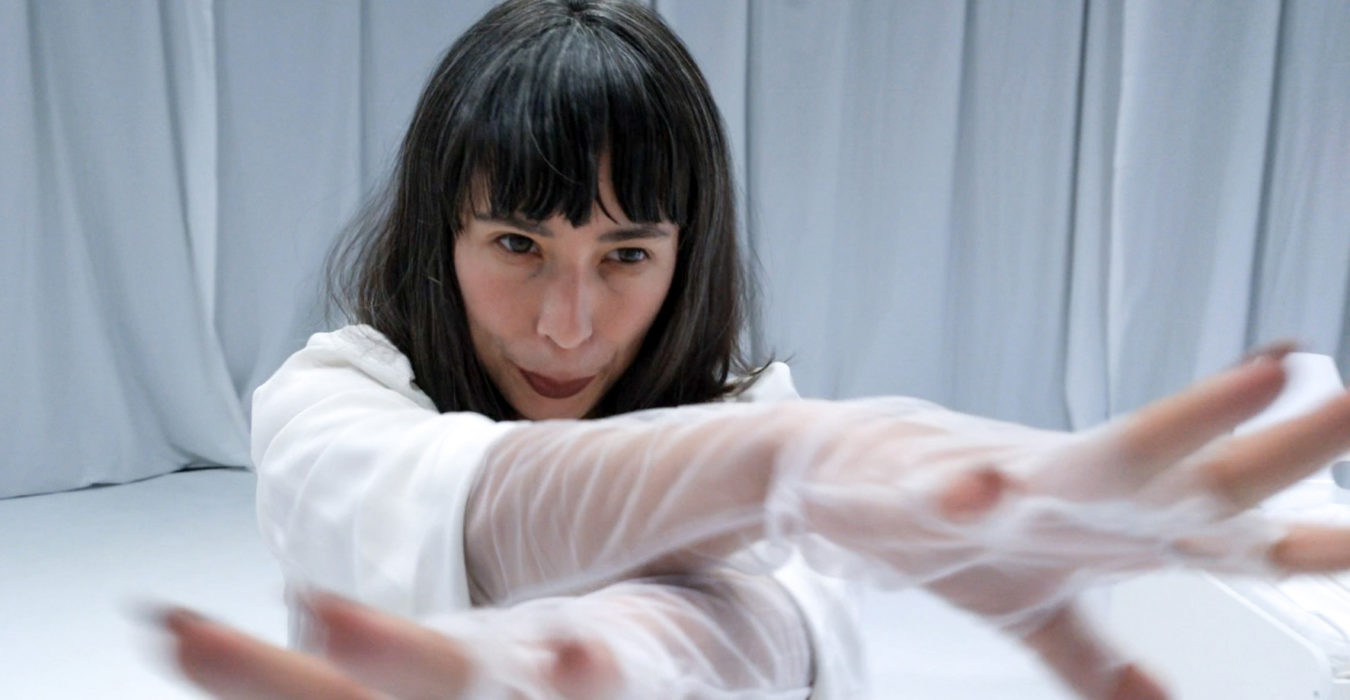Figuring Age
Boglárka Börcsök & Andreas Bolm
Hungarian artist Boglárka Börcsök and filmmaker Andreas Bolm explore the ageing of the human body in the dance-film installation Figuring Age. An earlier interview work with three almost 100-year-old Hungarian dancers gave rise to a remarkable relationship. As a dancer, Börcsök began to meticulously portray their movements and age-marked bodies until an almost ghostly takeover emerged. Afterwards, there is the opportunity to meet the three older dancers in a walk-through video installation.
“Figuring Age” portrays three elderly dancers from Budapest, aged between 90 and 101. The site-specific work consists of a performance and a two-channel video installation running simultaneously in separate spaces.
In 2015, choreographer and performer Boglárka Börcsök had the chance to meet several elderly dancers in Budapest. Wanting to work with some of them and knowing that their age would make it impossible to bring them back on stage, Börcsök and filmmaker Andreas Bolm decided to create a documentary called The Art of Movement. The film portrays Irén Preisich, Éva E. Kovács and Ágnes Roboz, who were once part of the early development of modern dance in Hungary. Gradually, the film became the basis of a choreographic composition, a physical score that allowed the artists to shape the embodiment of each woman.
The incorporation of Irén, Éva, and Ágnes is a continuous work of transforming and becoming – a Vertigo. The aging body does not contain only one body. Rather, it is multiple bodies layered in time and decay, in memories and experiences.
Figuring Age interweaves the stories and memories of the elderly dancers with their everyday gestures, postures and dance movements, tracing how the three women changed their lives and movement practices to survive the sociopolitical shifts of the 20th century. The slowness and fragile heaviness of their bodies demand a different economy of attention, giving visitors space to rethink and negotiate their relationship to aging and death.
In a separate room, the two-channel video installation reveals the elderly dancers in their private homes. The stillness of their rooms, filled with personal objects and memories, becomes the scenographic backdrop for their last performances on screen.
+ Talk Sat 17.09. 15:00 Care and Care Work, With Claire Cunningham, Boglárka Börcsök a.o.
Concept, direction, production: Boglárka Börcsök and Andreas Bolm
Performance: Boglárka Börcsök
Light and sound design: Andreas Bolm
Video cast: Éva E. Kovács, Irén Preisich, Ágnes Roboz
Video editing: Andreas Bolm and Boglárka Börcsök
Camera: Lisa Rave
English translation: David Robert Evans
Video’s production manager: Elisa Calosi
Video commissioned by Montag Modus/ MMpraxis
Video founded by Tanzfonds Erbe – an initiative by German Federal Cultural Foundation, La Musée de la Danse, Rennes, Senatsverwaltung für Kultur und Europa, Berlin
Performance supported by Die Irritierte Stadt Festival of Arts, Montag Modus/MM Praxis, Collegium Hungaricum Berlin, PACT Zollverein Atelier No.63 – Platform Experimental Platform for the Arts, Hellerau – Europäisches Zentrum der Künste – Residency Program, Neustart Kultur – an initiative for the Federal Commissioner for Culture and Media as part of the support program DIS-TANZEN, an Umbrella Association for dance in Germany.
Boglárka Börcsök (1987) is a performing artist and choreographer who grew up near the Romanian and Serbian border in the lowlands of South – East Hungary. She left Hungary in 2006 to study contemporary dance at Anton Bruckner Private University in Linz, Austria and at P.A.R.T.S. (Performing Arts Research and Training Studios) Brussels in Belgium. She was working and living in Brussels for 9 years, currently she is based in Berlin and Budapest. Boglárka is interested in how memory and history are embedded in gestures and movements and how this affects both the materiality and representations of the body. Her work draws from personal encounters, archival and historical research, and the practice of listening and looking. She uses voice, facial expression, and minutely composed embodiments. As a dancer and performer, Boglárka has worked with a variety of artists including Ligia Lewis, Kate McIntosh, Joachim Koester, Tino Sehgal and Eszter Salamon, with whom she collaborated on several projects within Salamon’s acclaimed MONUMENT series. Currently Boglárka is developing new projects with filmmaker Andreas Bolm.
Filmmaker and producer Andreas Bolm was born in Cologne, Germany, to a Hungarian mother and a German father. After working as a musician and sound engineer in Manchester, England, he began to experiment with photography, sound and video. He studied film at the film academy FAMU in Prague and at the documentary department of the University of Television and Film in Munich. Andreas is currently working between Germany, Hungary and France. His films portray people in their social and familial environments, examining the fine line between documentary and fiction. His works have been screened at many festivals worldwide. His short film Jaba (2006) was presented at the official selection Festival de Cannes and won the “Golden Mikeldi” for best documentary at the Zinebi film festival in Bilbao. In 2009 Andreas attended the renowned Cinefondation Residence Festival de Cannes where he developed his first feature The Revenants (2013), which was premiered at the 63rd Berlinale – Perspektive Deutsches Kino and presented at MoMA in New York. In 2014 Andreas was invited for a fellowship at the artist-residency Akademie Schloss Solitude in Stuttgart, Germany, where he developed and shot his second feature film Le Juge (2016) with the French actor and film director Jacques Nolot in the leading role. Since 2017 Andreas is collaborating with Hungarian artist and performer Boglárka Börcsök on several video and performance projects.
History of the company
Choreographer and performer Boglárka Börcsök and filmmaker Andreas Bolm have been collaborating in the field of performing arts since 2017. By using methods of expanded choreography, fiction and documentary, they explore how memory and history are expressed in personal gestures and movements.
Their first collaboration, a film titled The Art of Movement, traces the development of modern dance in Hungary in the first half of the 20th century by portraying three elderly dancers from Budapest. In the following work Figuring Age, a performance installation based on their previous film, Bolm and Börcsök restage the personal stories, gestures, and movements of the elderly dancers by creating a ghostly encounter, a choreography of memories. Their third work is a video installation called Night Bodies. Night Lights, creating a choreography of society through 16,000 portrait photographs from a small-town Hungarian community.
Their works have been funded and presented by TANZFONDS ERBE, PACT Zollverein, MMpraxis/Montag Modus, Die Irritierte Stadt Festival Stuttgart, Tanzquartier Wien, 9th Budapest International Documentary Festival and Moving in November in Helsinki, among others.


